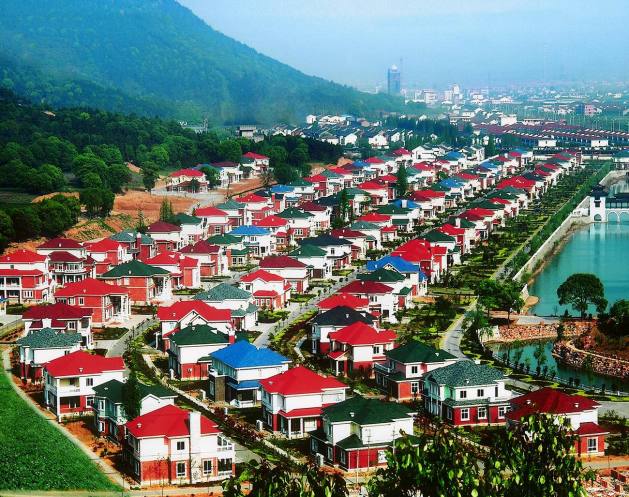Happy Individuals, Weeping Land
October 11, 2010 Leave a comment
In this village, people live in multi-storey villas with two-car garages and nicely trimmed gardens. The K-12 education is free to all residents. Men over 55 years old and women over 50 receive pensions every month from the local government. The healthcare system is so developed that residents’ medical costs are 100 percent covered.
Not in Norway or in Sweden, the village is in China. Take a two-hour drive from Shanghai into southeastern Jiangsu Province, and search for a small town called Huaxi Village, you will find it, whose well-known name is “the richest village in China”.
Surprise? Believe it or not, wealthy villagers in Huaxi Village are not alone in China. They are in Shaanxi Province, in Shanxi Province, in Sichuan Province, in Yunnan Province, you list.
That’s a pretty happy story, isn’t it? But the story hasn’t finished yet. If you look closely to these people, you will find out that no matter where they are, they often have a same characteristic: their wealth has nothing to do with agriculture. Some open clothing factories, others exploit coal mine. In Huaxi’s case, villagers operate 12 main factories covering textile, clothing, steel and non-ferrous metal industries, with a total turnover of 40 billion Yuan (6 billion USD) in 2006.
In other word, the only way for Chinese villagers to get rich is not to be peasants any more. The sooner they escape from agriculture, the richer they could possibly get. What an irony.
Pressured by the central government’s “GDP-lism”, those local governments are eager to maximize their economic income from the land to compete with their counterparts in the government performance measurement. Driven by the greediness for money, individual peasants, businessmen and official authorities have the same motive of turning the arable land into something else more profitable. As a result, the worst-case scenario for agriculture is happening in China: the expropriation of farmland has increased 15-fold over the past decade. Until the end of 2008, the total amount of arable land in China is 1.82574 billion acre, accounting for 12.68 percent of China’s total land area, a per-capita average of less than 1.4 acres.
It is so close to 1.8 billion acre, officially called the “bottom red line” for China’s agriculture, a goal set by Chinese central government in 2006 and highlighted in the Outline of China’s the Eleventh Five-year Plan, which is almost the most important and practical governing guideline of Beijing government.
Beijing government may not be the one to blame for the problem. Having been trying to solve the problem, the Central Committee repealed agriculture tax in 2006. The Ministry of Land and Resources also supervised the local governments not to seize the cultivable land in many ways. But after years’ endeavor, the Ministry of Land and Resources still discovered 8514 cases of illegally using land in 2009, 33. 7 percent of which was happened in cultivable land.
The problem is not coming from the policy. The problem is coming from the pocket of every individual: the peasant who is desperate to get out of the poverty, the businessman who greedily stares at the underground coal mine, and the official authority who want to build more factories, develop more industries, and in turn, have a great governing reputation of high economic growth, of course, and get more tax.
Can you change any of these people’s minds? Do you dare to draw any money out of their pocket?
I am afraid no one can.
That comes to the end of the story: a bunch of happy individuals, and a weeping land.
